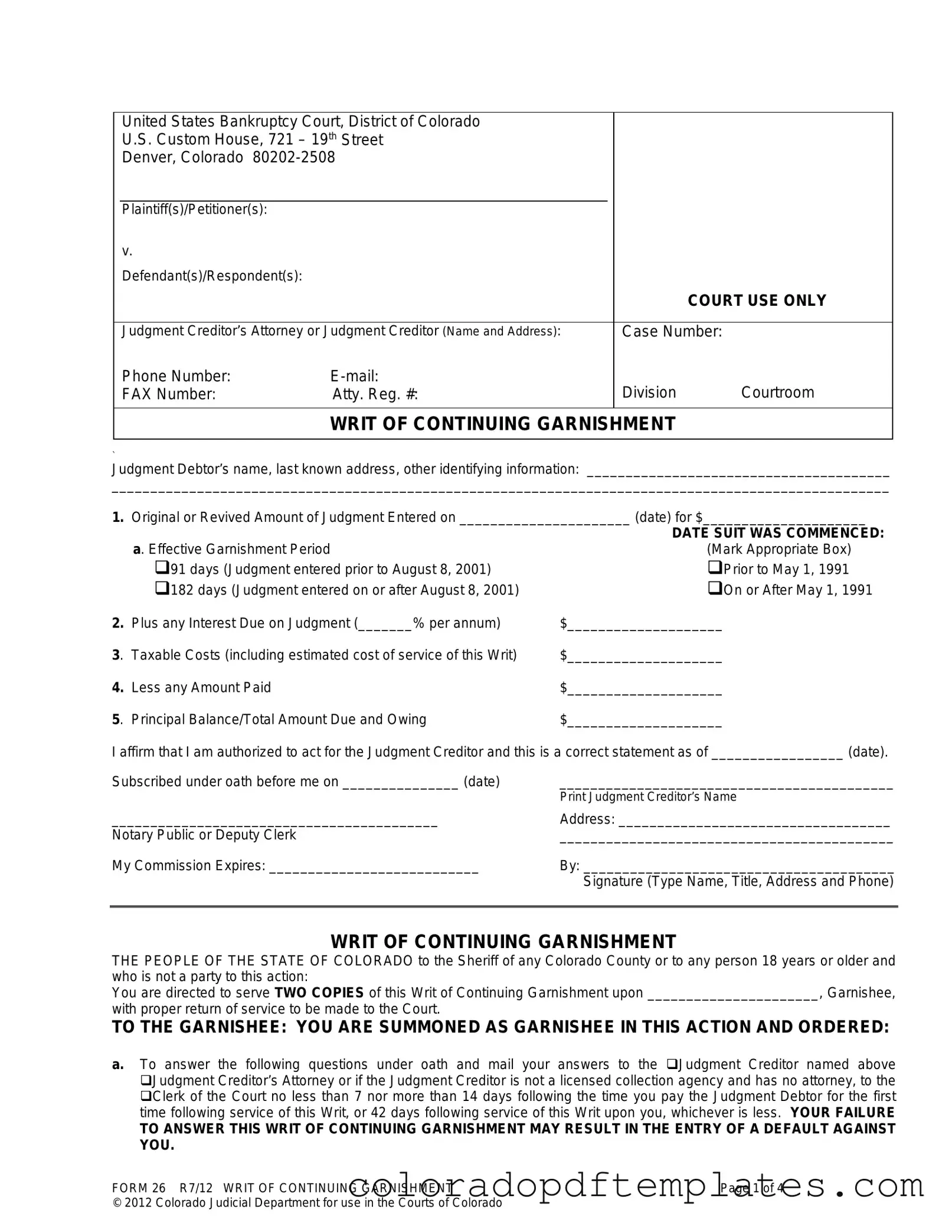The Colorado 26 form, also known as the Writ of Continuing Garnishment, is a legal document used in the state of Colorado. It allows a creditor to collect money owed by a debtor directly from the debtor's employer or bank. This form is typically used when a judgment has been entered against the debtor, and the creditor seeks to recover the amount owed through garnishment of the debtor's wages or bank accounts.
The Colorado 26 form can be used by judgment creditors who have obtained a court judgment against a debtor. This includes individuals, businesses, and organizations that have been awarded a monetary judgment in a court of law. The creditor must have the legal right to collect the debt and must follow the proper procedures outlined in the form.
How long does the garnishment last?
The duration of the garnishment depends on the type of judgment and the effective garnishment period selected on the form. Generally, the garnishment can last for either 91 days or 182 days, depending on when the judgment was entered. If the creditor has not received the full amount owed by the end of the garnishment period, they may need to file a new writ to continue the garnishment process.
Upon receiving the Colorado 26 form, the garnishee (the person or entity that owes money to the debtor) must take several actions:
-
Serve two copies of the writ to the appropriate parties.
-
Answer the questions on the form under oath and return the answers to the creditor or the court.
-
Withhold any nonexempt earnings owed to the debtor during the effective garnishment period.
Failure to comply with these requirements may result in legal consequences for the garnishee.
Can a debtor contest the garnishment?
Yes, a debtor has the right to contest the garnishment. If the debtor believes that the garnished earnings are exempt or that the calculation of exempt earnings is incorrect, they can file an objection. This must be done within a specific timeframe after being paid. The debtor should use the attached objection form or a similar document to present their case to the court.
What happens if the garnishee does not respond to the writ?
If the garnishee fails to respond to the writ, the court may enter a default judgment against them. This means the garnishee could be held responsible for the amount that should have been withheld. It's crucial for the garnishee to take the writ seriously and respond within the required timeframe to avoid any legal repercussions.
